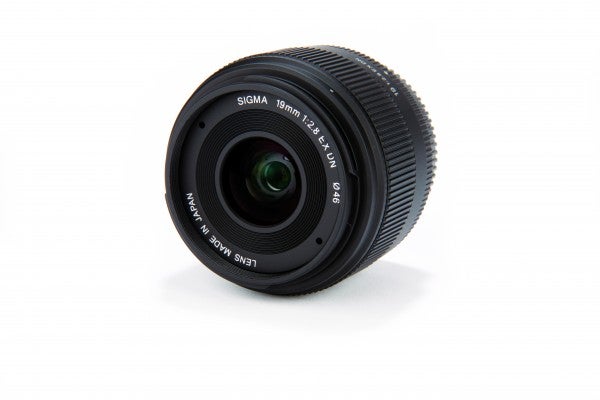The Sigma 19mm f/2.8 EX DN is part of an all-new 'DN' lens line-up which offers high-end Sigma performance for a range of CSC lens mounts
Sigma 19mm f/2.8 EX DN Review
Sigma’s new line of Digital Neo (DN) lenses promises, high optical performance, a compact construction and quiet autofocusing. Those promises are certainly realised in the 19mm prime, which is the wider of the first two lenses to be launched.
Like its 30mm stable-mate, the 19mm is supplied with a fitted, padded case and, also like its stable-mate, it exhibits a distinct rattle when handled off the camera. This may be normal, according to the instruction sheet, but it is also somewhat unnerving!
The two lenses share the same 46mm filter thread but the 19mm comes with a detachable, reversible, cylindrical lens hood which the 30mm lacks. When stowed, the lens hood obstructs the manual focussing ring, which occupies the forward half of the lens barrel. This is not a problem in AF mode. There is no movement of the manual focussing ring when AF is engaged. The AF system, which uses a newly developed direct-drive linear motor, is both speedy and silent.
When MF mode is selected (within the camera’s software settings) the 30mm’s manual focussing ring rotates smoothly and easily but with a positive feel. That said, manual focussing is difficult at the best of times when using a non-viewfinder camera body.
Interestingly, Sigma’s DN lenses are designed to fit both Micro-Four-Thirds cameras and Sony’s E-Mount bodies even though different-size sensors are used in these two systems. As a result, the effective focal-length is different. In the case of the 19mm lens tested here, the equivalent full-frame lens required to capture the same angle-of-view is 38mm (2x conversion factor) for a Micro-Four-Thirds camera and 28mm (1.5x conversion factor) for a Sony E-Mount camera.
This means the lens is not using its full image field when fitted to a Micro-Four-Thirds body so it might be expected that this would produce higher-quality images. That is not always the case for d-SLRs (comparing the same lens on full-frame and APS-C bodies) and it would be nothing more than conjecture to attempt to predict what the outcome might be in this case. We will simply have to wait for an opportunity to test these two performances side-by-side!
An Olympus PEN Mini was used for these tests and produced some excellent MTF results that approached the 0.5 cycles-per-pixel maximum figure. For this reason, and despite a gradual decline from f/11, Sigma’s 18mm prime has been awarded maximum marks for its MTF performance.
But despite the use of three aspherical elements, there was some sign of chromatic aberration in images of high-contrast technical targets. Fortunately, real-world pictures were visually free of chromatic aberration.
Verdict
Overall this is an exceptional lens that should satisfy all users who want a very affordable, modest wide-angle prime.





